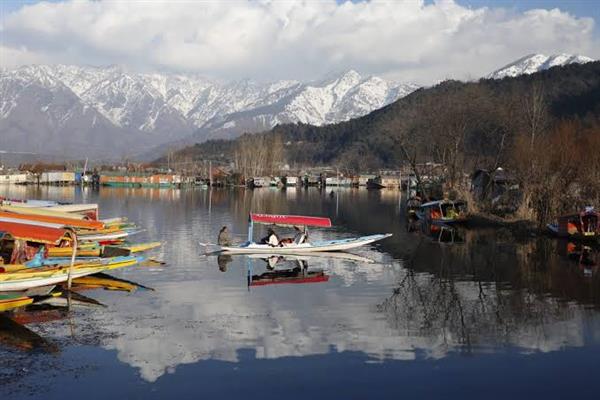To foster a sense of social unity among its members, every society needs a collective consciousness. In every society, educational and religious institutions play a major role in preserving this collective consciousness. However, these Institutions function differently in many communities. Religious institutions in South Asia work primarily to foster social cohesion in contrast to Western culture. The members of society are shielded by social solidarity. Religion also plays a significant role in mentioning social togetherness in Kashmiri society. Great saints and religious speakers have upheld this solidarity in this regard for a very long time through religious ethos and mythology. Currently, several organizations of diverse types continue to uphold this solidarity.
The phenomenon of suicide is not new. It has a lengthy past. It has been discussed by various social scientists from various nations based on their observations of civilization, including Emile Durkheim, Samuel Knapp, and Petruska Clarkson. In their writings, they have discussed a variety of suicide-related topics. Suicide occurs as a result of both high and low levels of integration and regulation in society, according to Emile Durkheim. But after COVID-19, the suicide scenario in the Kashmir valley has changed. Covid-19 is the primary factor behind the rise in suicide according to Haseeb ul Rahman, commandant of SDRF, Kashmir. According to (WHO), 800000 people die by suicide every year, i.e. one person every forty seconds. In Kashmir according to State Disaster Response Force that 365 attempts of suicide were recorded in which 127 persons died.
Individual members of society have not been directly harmed by Covid-19. Social solidarity was first harmed by this covid-19 and finally, this has an effect on the people in society, which we are witnessing in these current days. The Covid-19 factor is mostly to blame for the valley of Kashmir’s declining social cohesion and increase in the suicide rate. COVID-19 has more of an indirect impact on social cohesion than a direct one. Compared to other institutions, religious institutions were more negatively impacted by COVID-19. This ultimately led to social isolation and, most frequently, suicide.
Because Kashmir has traditionally been a religiously driven society, religion is the main institution in Kashmir society. In terms of a necessary prerequisite for Kashmiri society, religion, therefore, fosters more solidarity. Whenever we interact with local senior’s citizens of the valley. Who among us has never pursued any form of education? Throughout that exchange, they will tell us at least one or two Great Saints myths that have to do with social interaction. These myths, which are primarily religious in origin, end up fostering social unity among members of Kashmiri society. Religion in Kashmiri society does more than only foster camaraderie through tales. Through prayers and various conferences organized by some religious organizations in some places like, Dargah Hazaratbal, Mosques and in many religious places, it has fostered and continues to foster greater unity. People are the listeners at these religious seminars. This spreads culture and cultivates collective consciousness in people’s thoughts. Preachers or religious academics speak about the humble lifestyles of great religious leaders during these gatherings. Success and struggle coexist in life. India-wide academics are invited to present a lecture at these conferences. In the end, this fosters social unity and collective consciousness among people. Since a very long time ago, this institution has made a greater social solidarity contribution to Kashmir society. Failure to function in this institution after the breakup of covid-19 results in personal estrangement and disintegration. Most of this ends with abnormal behavior and suicide.
‘Materialism’ is a further element that pulses through this post-modern society like blood. Due to its one driving force, capitalism, Materialism has destroyed every institution in society. It expanded the number of opportunities for corruption in society. Society as a whole is impacted by corruption. Individuals have not been directly impacted by it either. Individuals’ collective consciousness is impacted. In people who are low in both material and non-material culture, it fosters a sense of estrangement. Suicide ultimately results from this, which causes people to become socially isolated. The fundamental characteristic of religion is to satisfy the individual according to specified criteria and to integrate him with the larger society. Other notable sociologists who concur with this include Talcott Parson, Bronislaw Malinowski, and Emile Durkheim. Performing various religious rites by the individual, He feels more integrated and aware of society’s collective consciousness. Through these many religious gatherings organized by specific religious organizations in Kashmir society has attempted to rein in the growing materialism of the community as well. The only institution that has more influence over integrating socially isolated people into larger society is religion.
We can see how important this institution is in terms of functionality right now. Education institutions integrate more than religion in this post-modern world. Yes, that is true, but not in Asian societies, only in Western societies. The religion predominates across Asia. Here, education comes after religion. In Asian countries, education is still primarily used as a tool to pursue material goals. Therefore, people should follow religion to remain away from this social evil and religion will save them from all kinds of evils in society.
The causes of the growing suicide rate in Kashmir are complex and multi-faceted. Some of the factors that have been identified include:
- Political instability: The ongoing conflict in Kashmir has led to a high level of stress and anxiety among the population, which can contribute to mental health problems and suicidal ideation.
- Trauma and grief: Many people in Kashmir have experienced traumatic events, such as the loss of loved ones, displacement, and human rights violations, which can lead to depression and suicidal thoughts.
- Economic hardship: High levels of poverty, unemployment, and lack of economic opportunities can cause significant stress and contribute to mental health problems.
- Stigmatization and lack of access to mental health services: Mental illness and suicidal ideation are often stigmatized in Kashmir, which can prevent people from seeking help. Additionally, there is a lack of mental health services available in the region.
- Substance abuse: Substance abuse, particularly of drugs such as heroin and opium, is a significant problem in Kashmir and can contribute to mental health issues and suicide.
Overall, addressing the growing suicide rate in Kashmir will require a multi-faceted approach that includes addressing the underlying political and economic factors, improving access to mental health services, and reducing the stigma surrounding mental illness.






